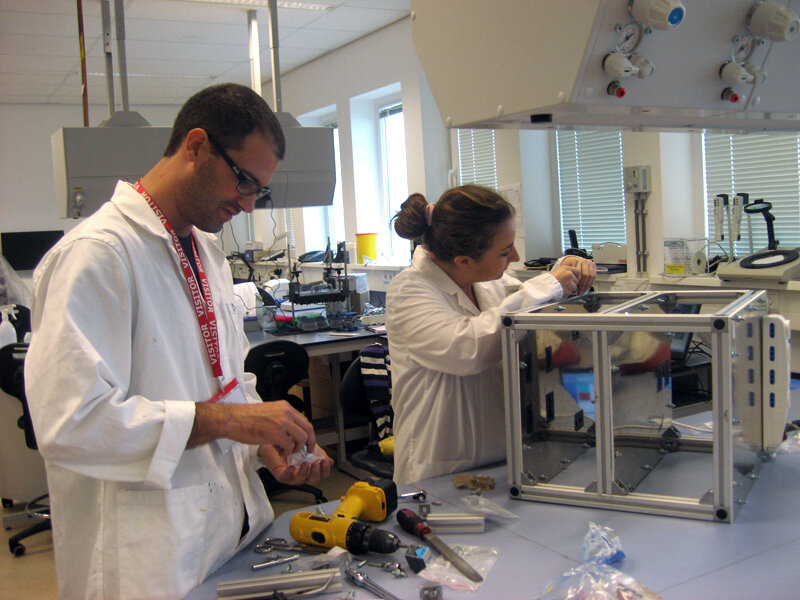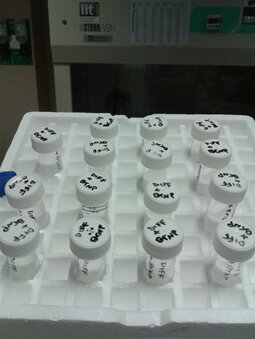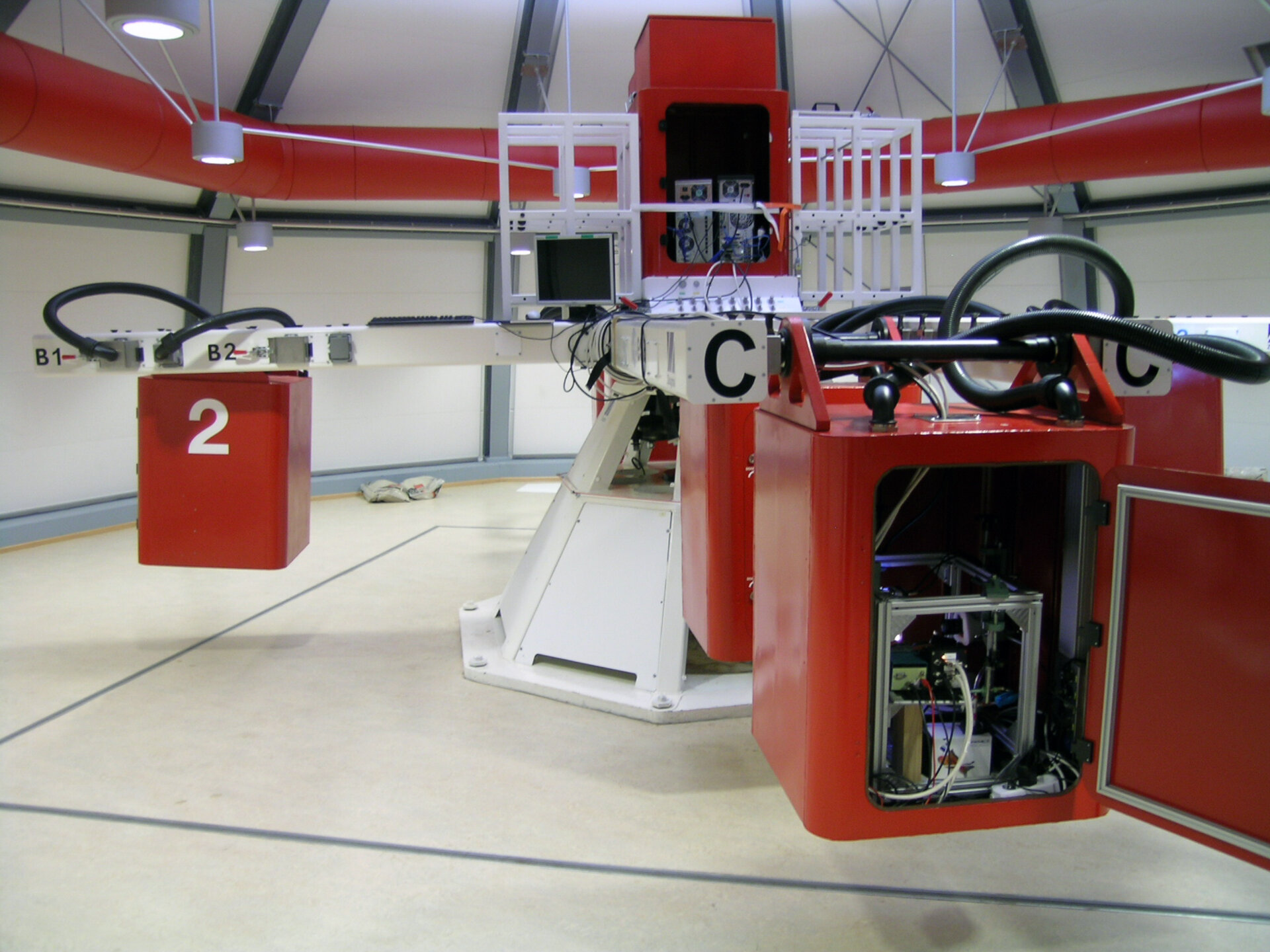Teams publish Spin Your Thesis! results
Two university student teams from ESA’s Spin Your Thesis! programme have recently published valuable results in scientific journals. One study reveals a clear effect on the electrical behaviour of plant cells. The other offers a way to stimulate bone cells formation.
Spin Your Thesis! is a programme offered by the ESA Education Office. It allows undergraduate, Master and PhD student teams the opportunity to conduct experiments in ESA’s Large Diameter Centrifuge (LDC). This facility can achieve gravitational forces between 1 and 20 times the natural pull of Earth’s gravity.
The HyperMEA team comprised two PhD students from the University of Florence, Italy. Their experiment investigated the effects of hypergravity conditions on the electrical activity in plants, a process that is still not fully understood.
It is probably a way for plant cells to communicate with one another but exactly what information the signals are carrying remains unknown. Previous experiments have shown that this signalling system is very sensitive to the plant’s environmental conditions. So, the team wanted to investigate gravity as well.

This latest experiment was a follow-up to a previous investigation they performed during the 2010 Spin Your Thesis! campaign.
They found that the electrical activity is dependent on gravity. In hypergravity, the electrical propagation through the plant cells became faster. The same response has been observed previously in animal cells.
“This correlation between plants and animals is very important because it helps to strengthen our hypothesis that all living organisms share basic mechanisms,” says Elisa Masi, University of Florence, Italy, who assisted the HyperMEA team.
The second group that just had their results published from a Spin Your Thesis! campaign is Team Osteo, also from Italy. The team is made up of two PhD students from the Istituto Italiano di Tecnologia and Scuola Superiore Sant'Anna and one Master’s student from the University of Pisa.
As the name suggests, they studied the behaviour of bone growth under hypergravity conditions. They mixed stem cells from bone marrow, called mesenchymal stem cells, with barium titanate nanoparticles. This procedure has already been shown by other studies to induce the development of osteoblasts, the first stage of bone growth. Then they placed the mixture in the centrifuge and experimented at 20g.

The team discovered that the osteoblasts developed more quickly when performed in hypergravity. “We saw that hypergravity, combined with nanoparticles, increases the expression of some genes and proteins that are typical of bone development. This method improves the maturation of mesenchymal stem cells towards bone cells with respect to traditional approaches,” says Antonella Rocca, one of the university students of the Osteo team.
Eventually, such cells could be introduced into broken bones in humans, in order to speed up the healing process. “But before clinical trials on humans, the method must first be tested on animals”, says Antonella Rocca. Nevertheless, she hopes that it might only take a couple of years before general patients can benefit.
Beyond the scientific results, the experience has also been invaluable to the personal and professional development of the students involved.
“It was a great experience both at personal and professional level because we could interact with ESA technicians and we could learn new techniques and how to work in a team,” says Antonella Rocca.
Elisa Masi saw the benefits to her students too. “It was an opportunity for them to experience something different, to meet other people from other countries and cultures, and to swap ideas. The world of the European Space Agency is very rich. They can help you in many different ways to complete your research.”
The Spin Your Thesis! programme usually opens a call for proposals once a year in September, which then stays open for three months.
Notes for editors:
The Electrical Network of Maize Root Apex is Gravity Dependent by Elisa Masi, Marzena Ciszak, Diego Comparini, Emanuela Monetti, Camilla Pandolfi, Elisa Azzarello, Sergio Mugnai, Frantisek Baluška & Stefano Mancuso is published in Scientific Reports 5 : 7730, DOI: 10.1038/srep07730
Barium titanate nanoparticles and hypergravity stimulation improve differentiation of mesenchymal stem cells into osteoblasts by Antonella Rocca, Attilio Marino, Veronica Rocca, Stefania Moscato, Giuseppe de Vito, Vincenzo Piazza, Barbara Mazzolai, Virgilio Mattoli, Thu Jennifer Ngo-Anh, Gianni Ciofani is published in International Journal of Nanomedicine 10 : 433, DOI: 10.2147/IJN.S76329






